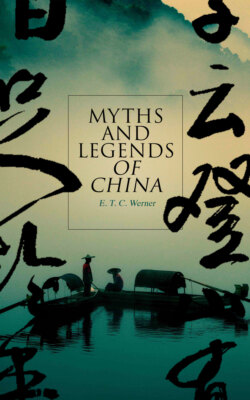Читать книгу Myths and Legends of China - E. T. C. Werner - Страница 30
На сайте Литреса книга снята с продажи.
Sports and Games
ОглавлениеThe first sports of the Chinese were festival gatherings for purposes of archery, to which succeeded exercises partaking of a military character. Hunting was a favourite amusement. They played games of calculation, chess (or the 'game of war'), shuttlecock with the feet, pitch-pot (throwing arrows from a distance into a narrow-necked jar), and 'horn-goring' (fighting on the shoulders of others with horned masks on their heads). Stilts, football, dice-throwing, boat-racing, dog-racing, cock-fighting, kite-flying, as well as singing and dancing marionettes, afforded recreation and amusement.
Many of these games became obsolete in course of time, and new ones were invented. At the end of the Monarchical Period, during the Manchu dynasty, we find those most in use to be foot-shuttlecock, lifting of beams headed with heavy stones—dumb-bells four feet long and weighing thirty or forty pounds—kite-flying, quail-fighting, cricket-fighting, sending birds after seeds thrown into the air, sauntering through fields, playing chess or 'morra,' or gambling with cards, dice, or over the cricket- and quail-fights or seed-catching birds. There were numerous and varied children's games tending to develop strength, skill, quickness of action, parental instinct, accuracy, and sagacity. Theatricals were performed by strolling troupes on stages erected opposite temples, though permanent theatres also existed, female parts until recently being taken by male actors. Peep-shows, conjurers, ventriloquists, acrobats, fortune-tellers, and story-tellers kept crowds amused or interested. Generally, 'young China' of the present day, identified with the party of progress, seems to have adopted most of the outdoor but very few of the indoor games of Western nations.
